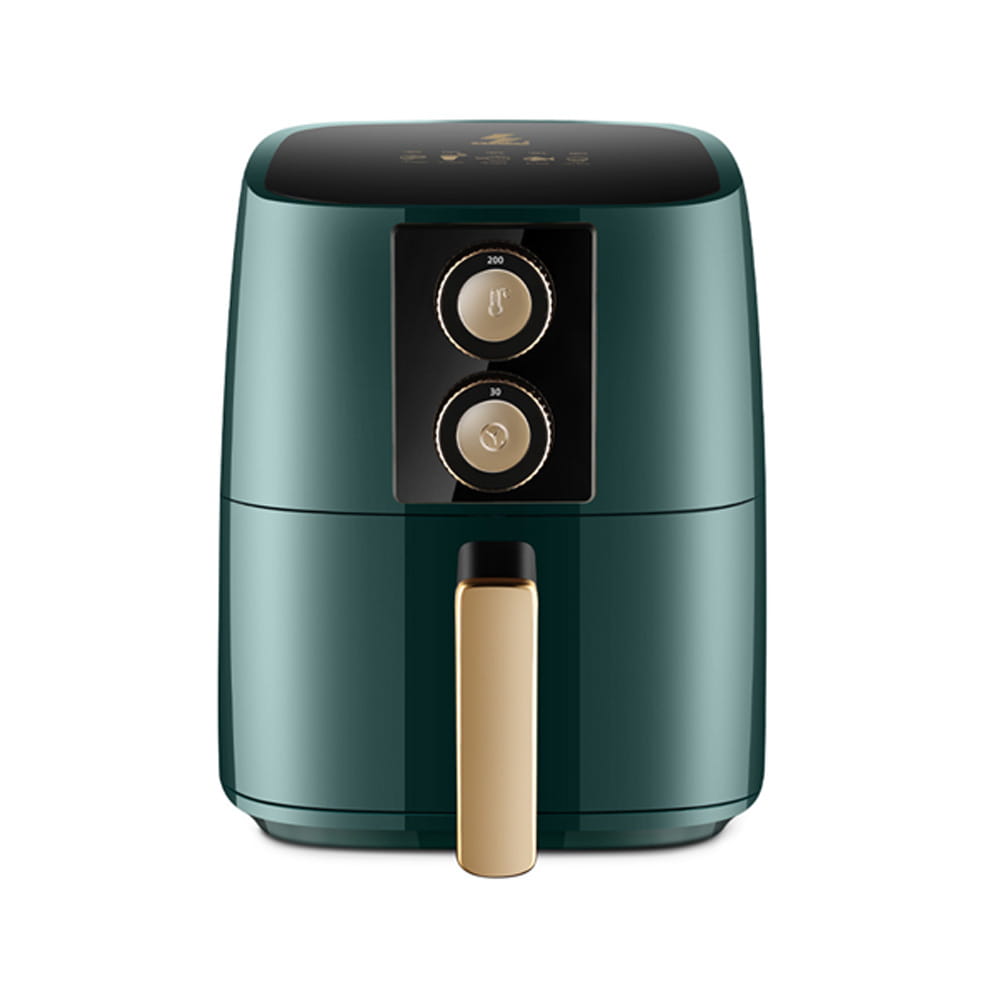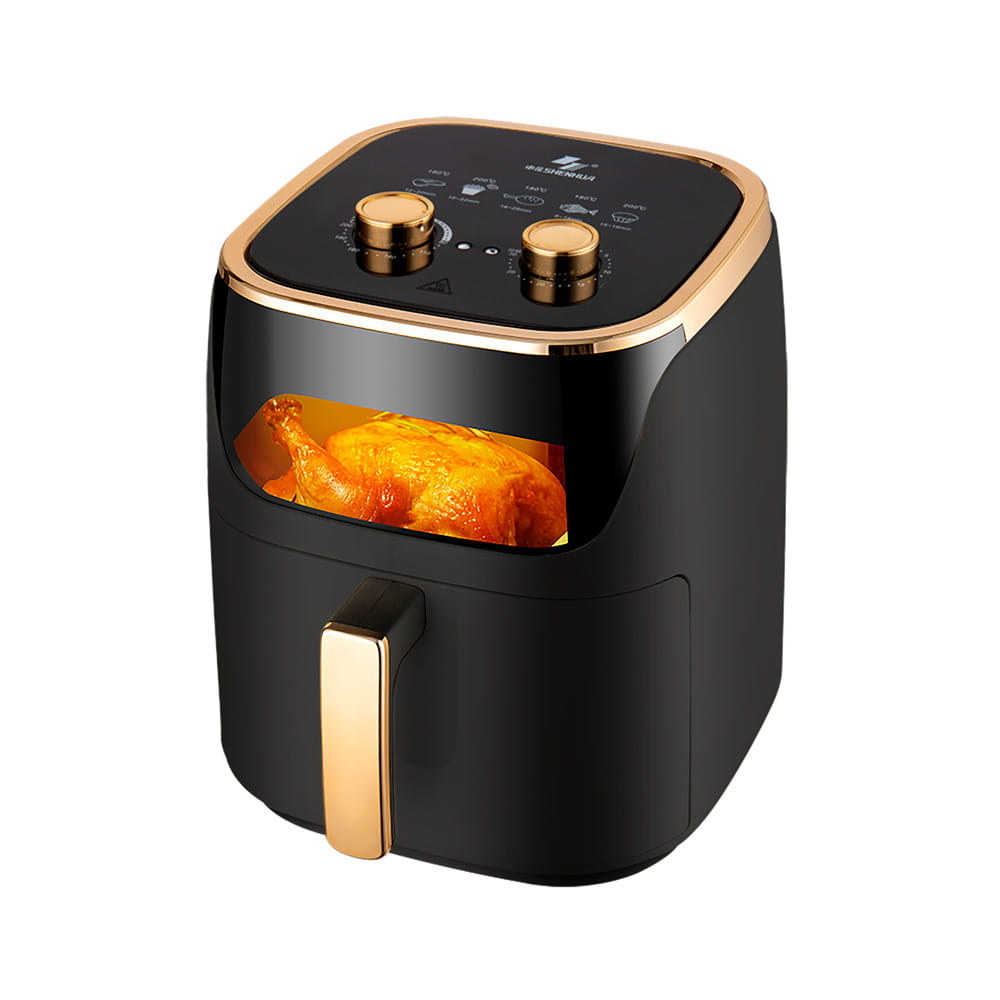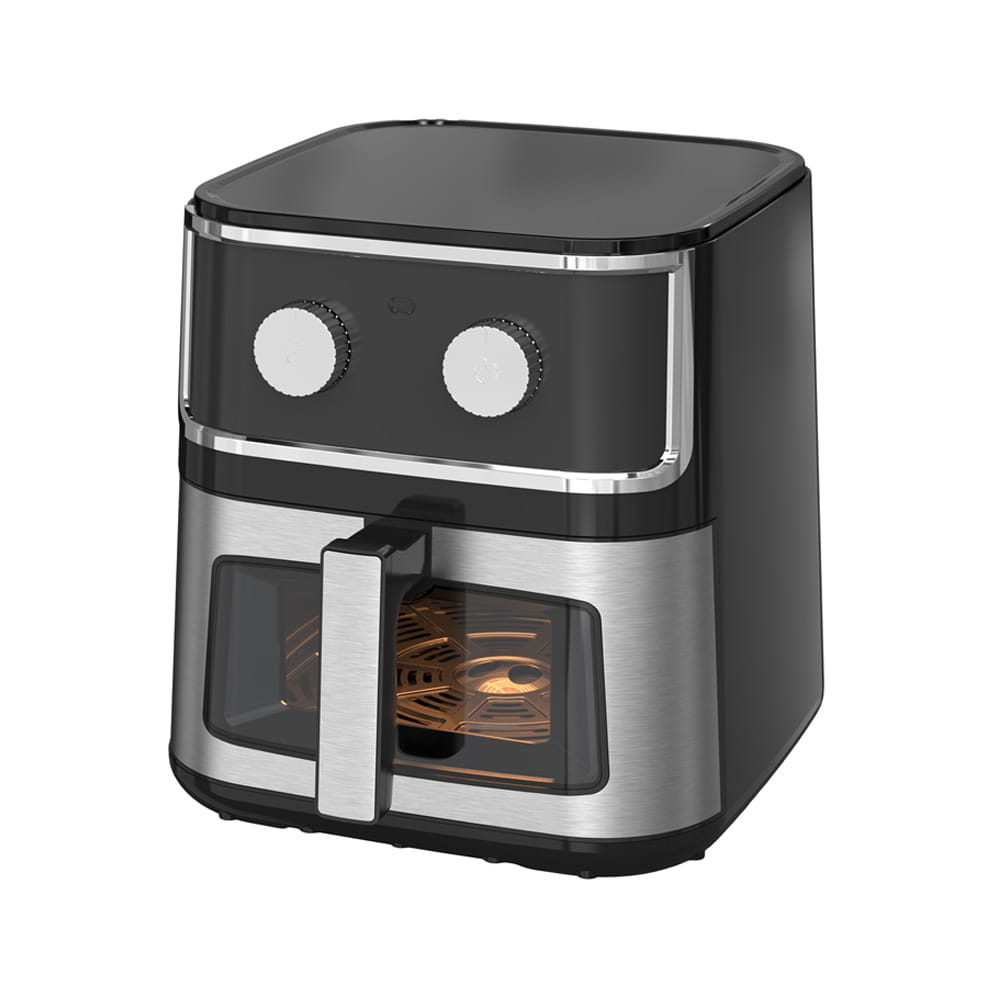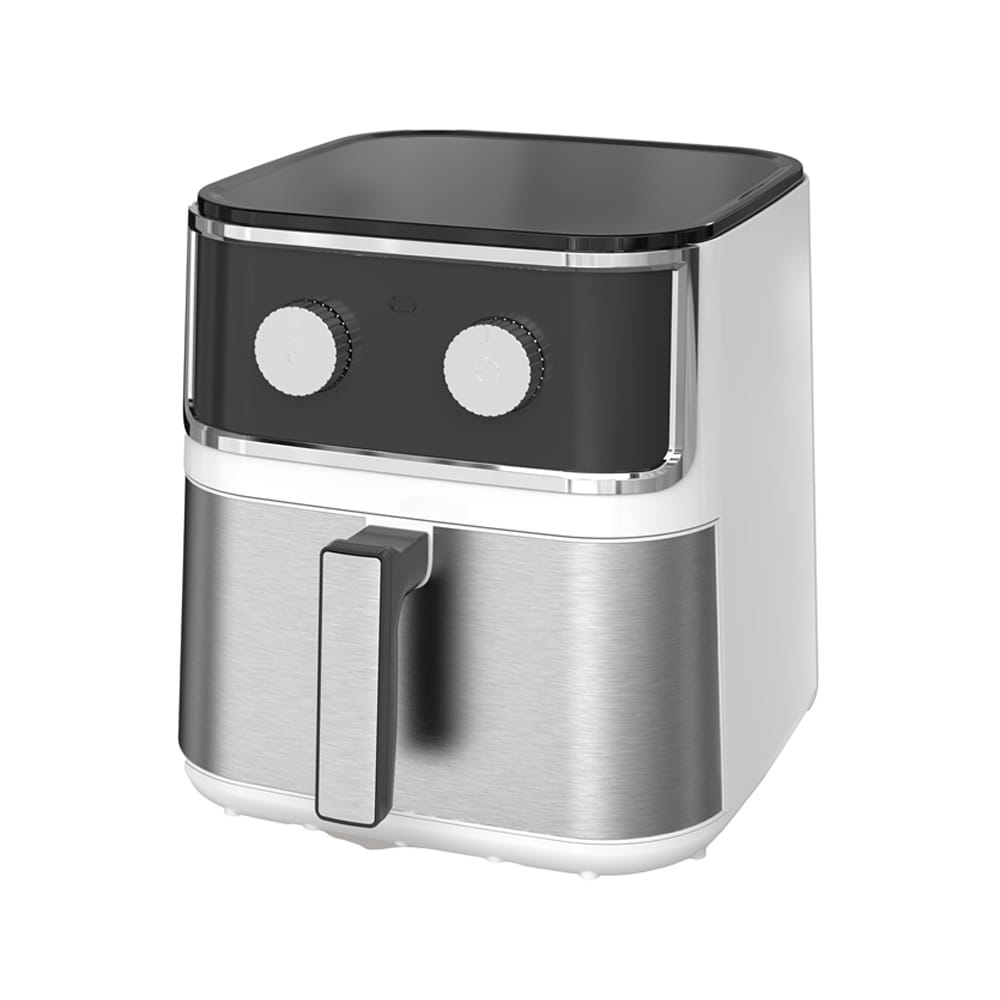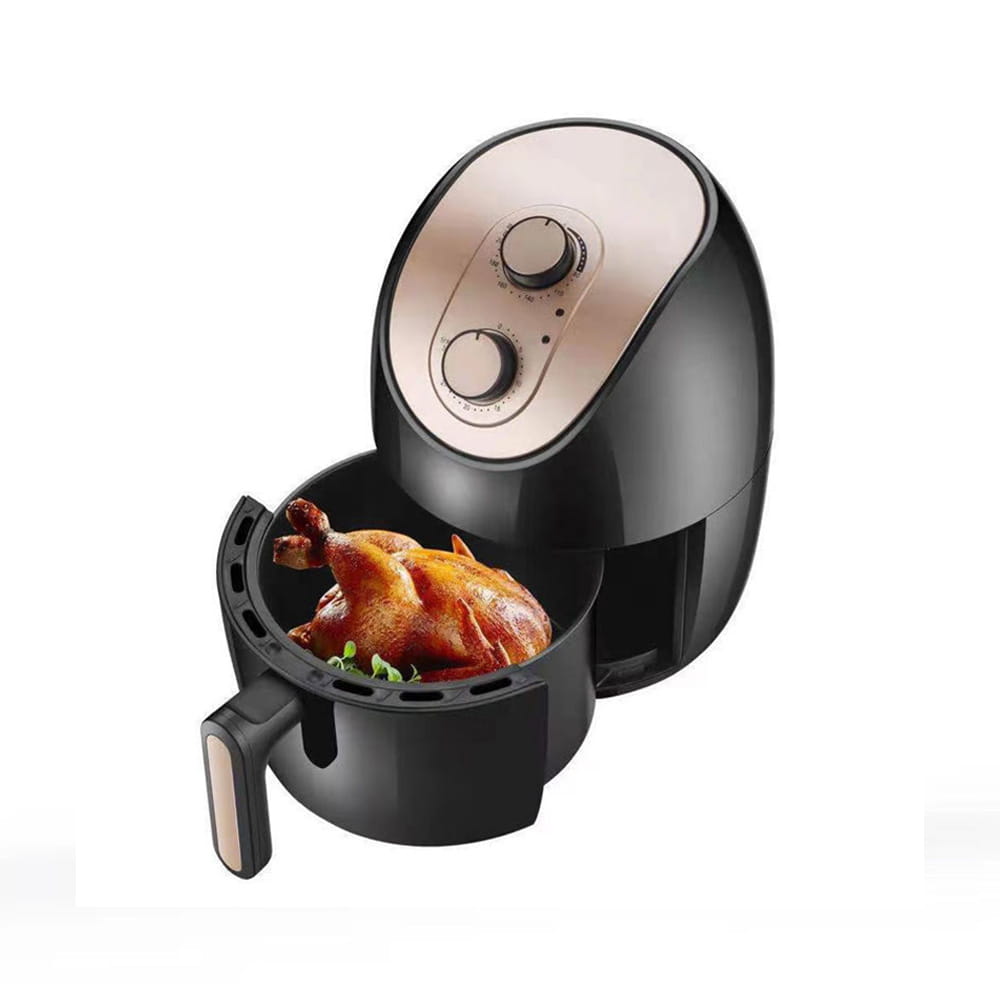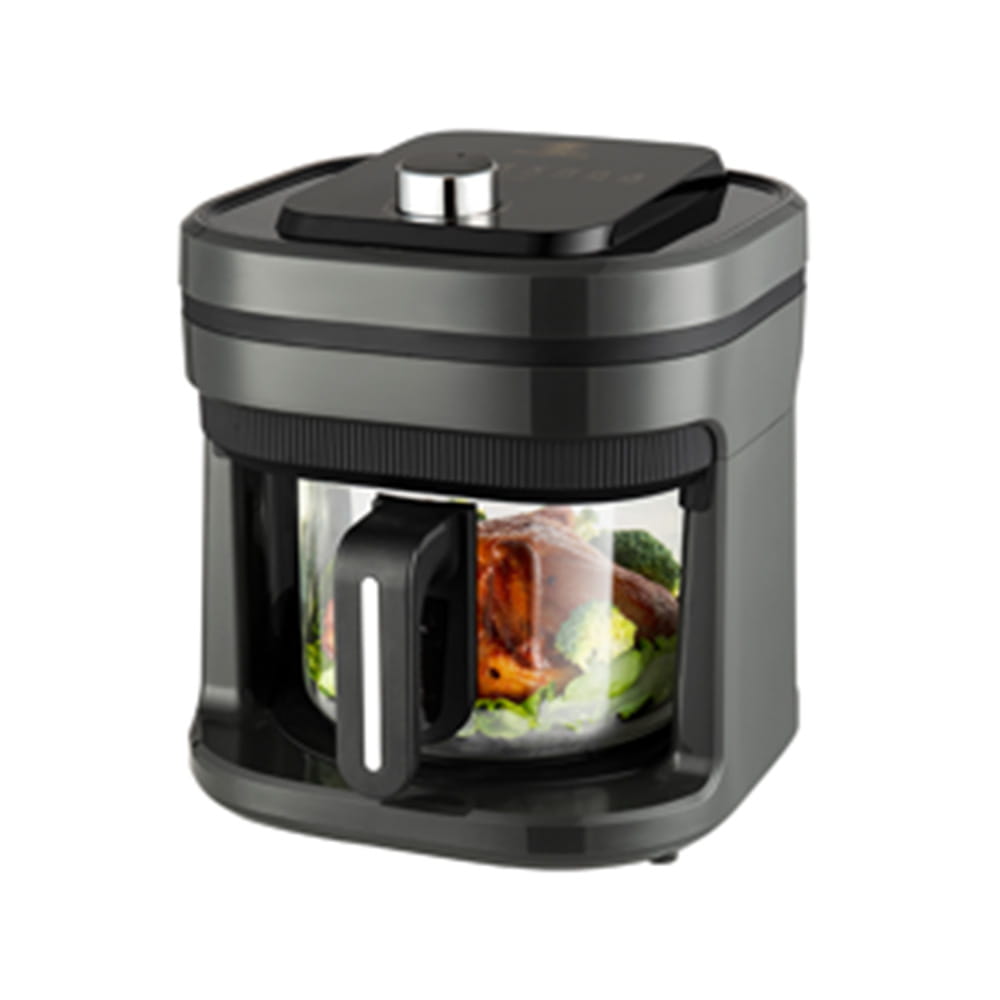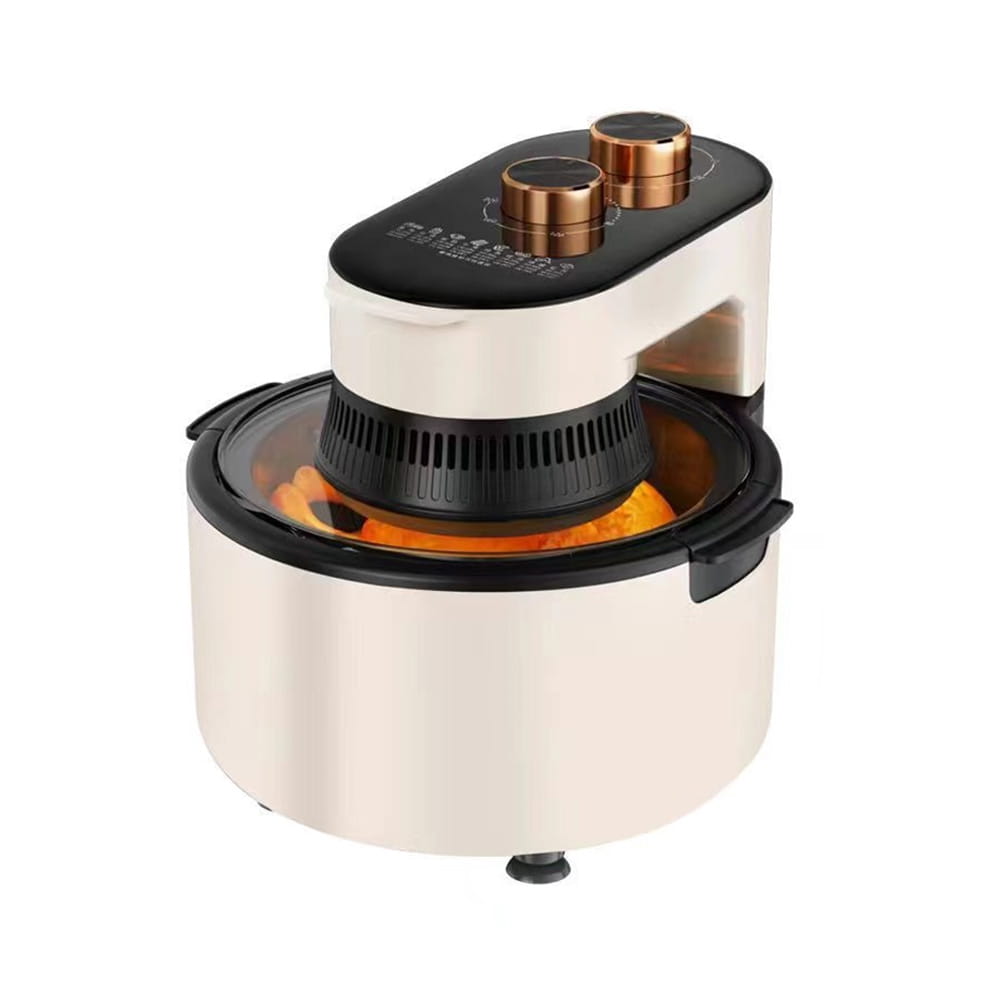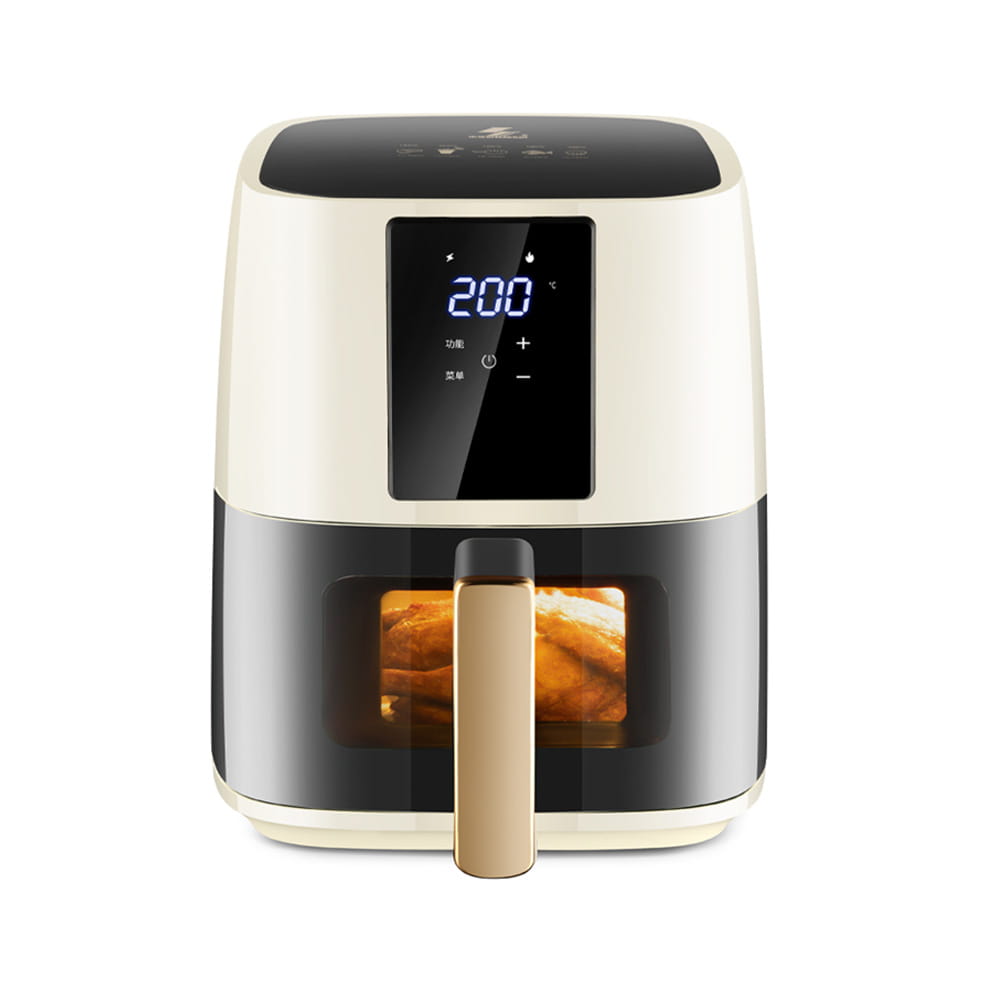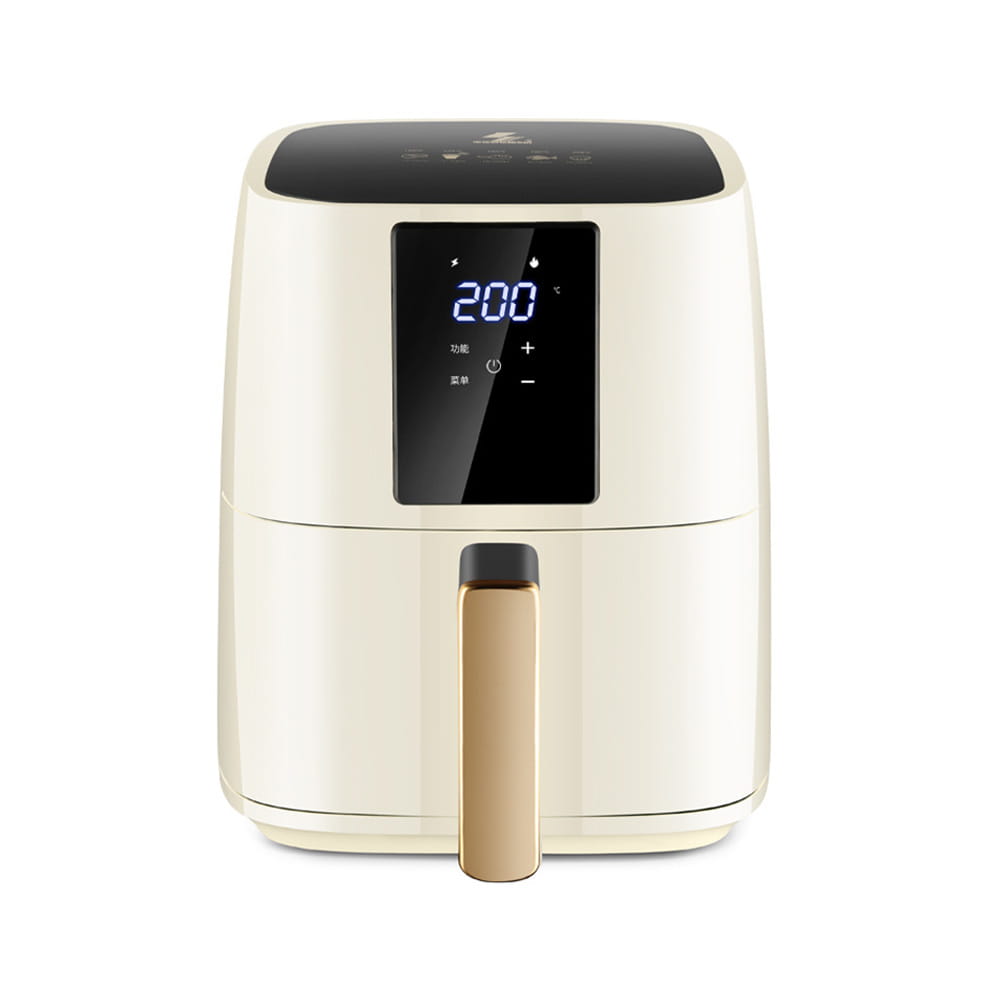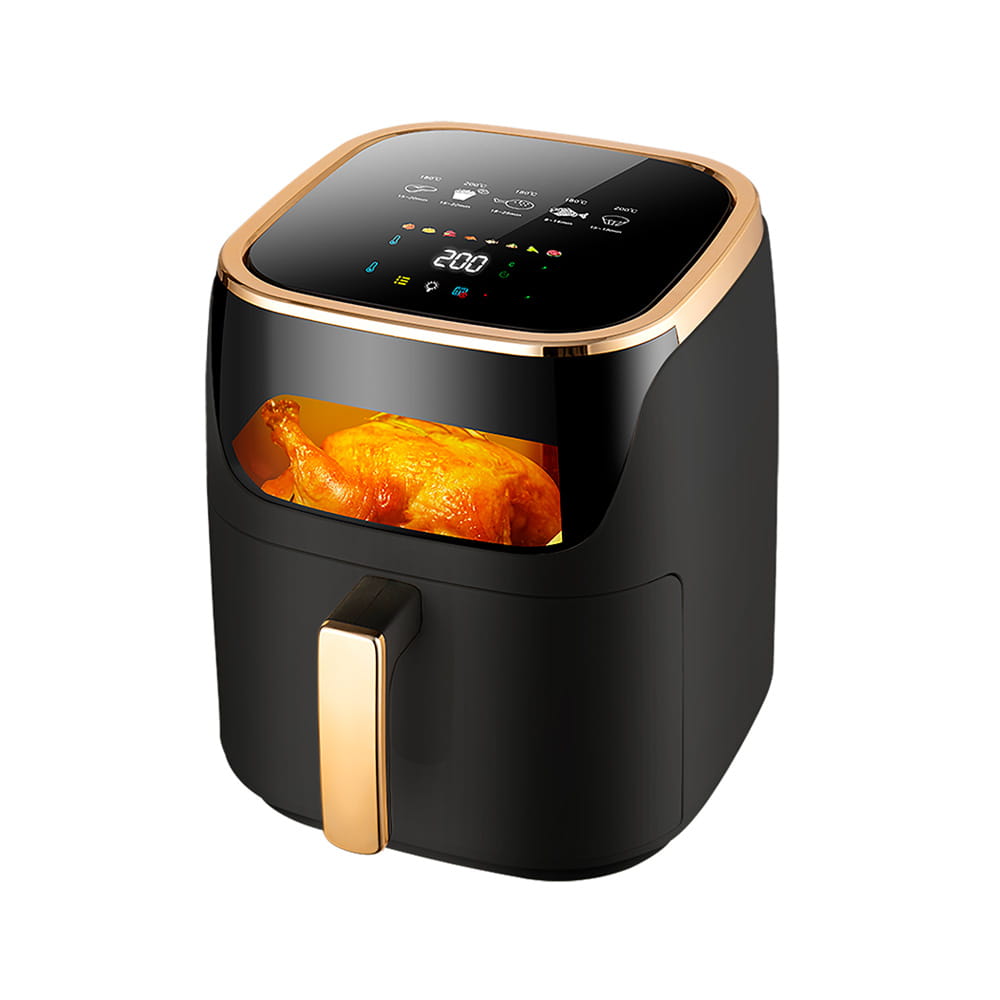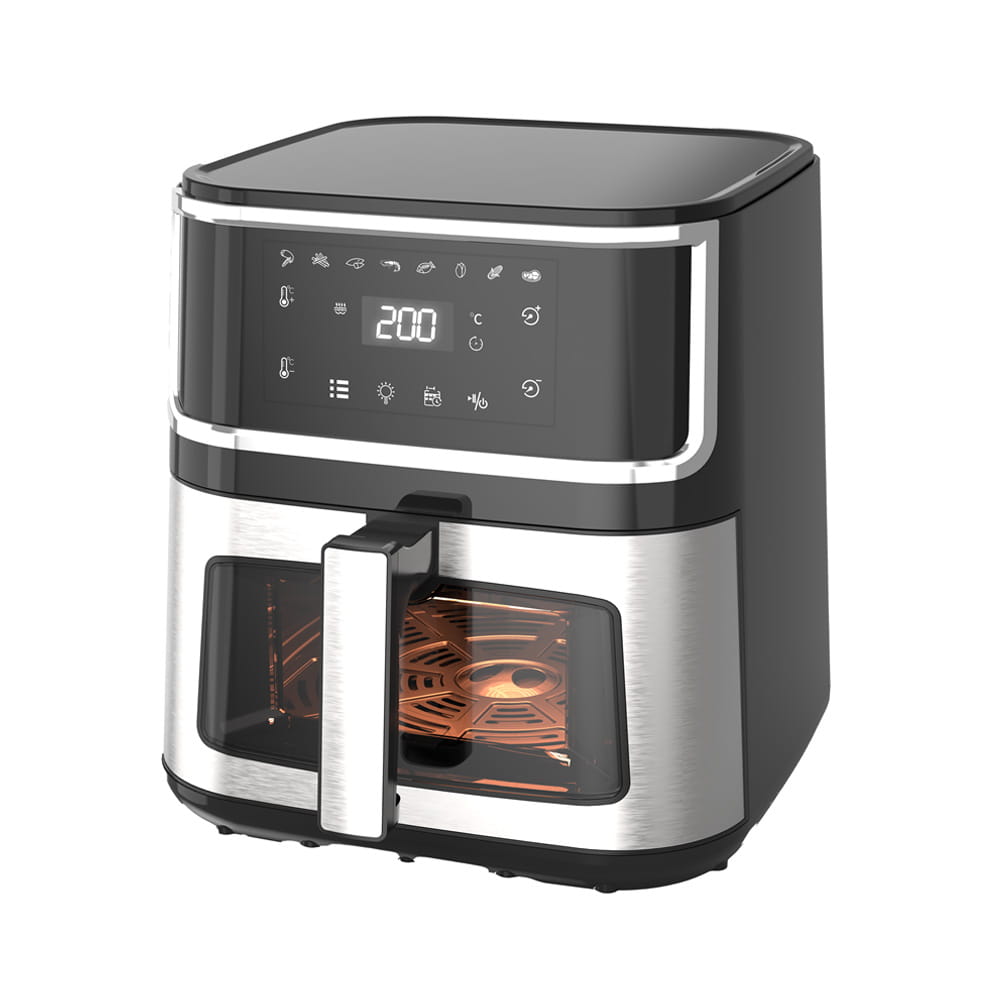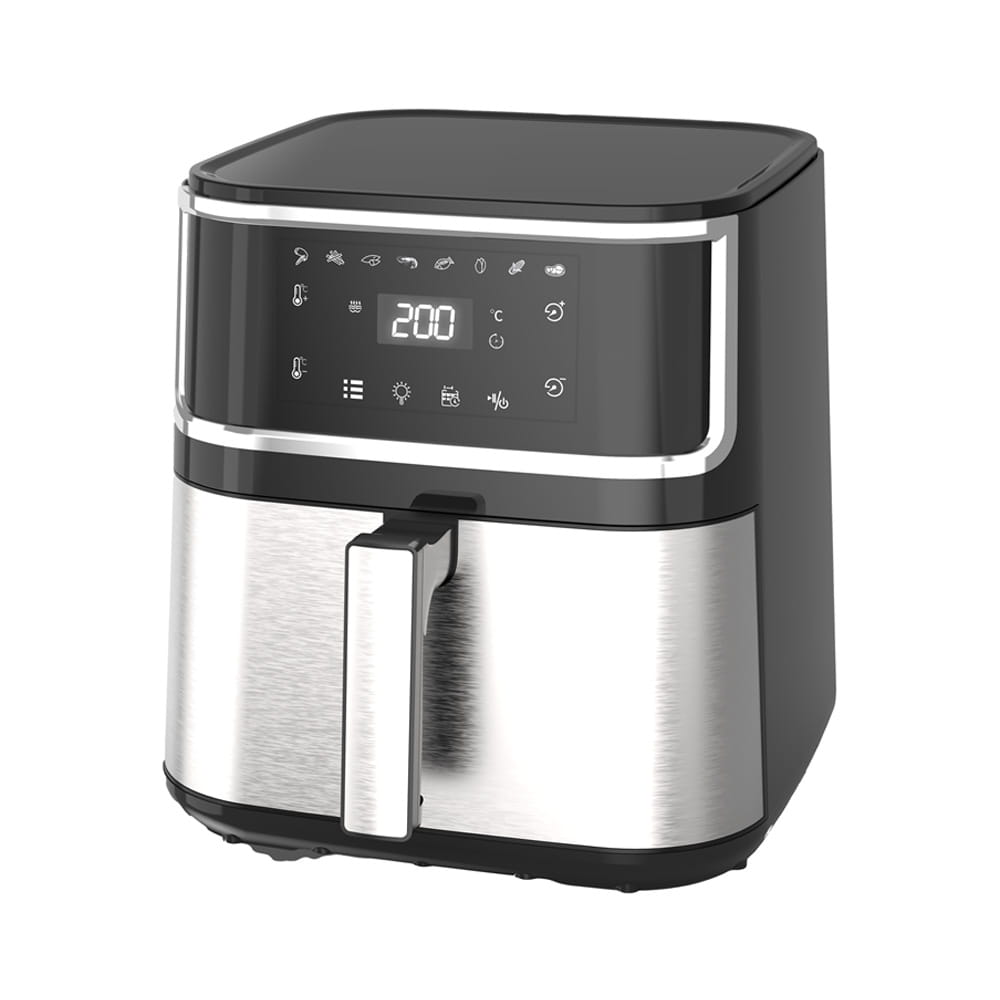Cavity Geometry and Thermodynamic Optimization
The core performance of a stainless steel air fryer depends on the structural design of its cavity, which directly affects the uniformity and efficiency of hot air flow. Professional design is not simply a matter of stacking volume, but rather the precise application of thermodynamics and fluid dynamics.
The ideal cavity is often cylindrical or rectangular with rounded corners to minimize air turbulence and dead zones. The smooth and highly reflective stainless steel interior effectively reduces heat absorption and enhances radiant heat transfer. Designers carefully position the heating element at a precise distance from the food, typically using a top-mounted heating system to ensure vertical heat transfer downward.
Furthermore, the bottom of the inner cavity is often not completely flat, but may have a slight conical or reflective curve. Combined with the airflow guide grooves at the bottom, this guides the high-speed, descending hot air around and re-introduces it into the circulation system, creating a highly efficient "tornado hot air pattern." This sophisticated geometric design is key to achieving uniform heating of food, thus ensuring the air fryer's crispy texture and extremely low bounce rate.
High-Efficiency Hot Air Circulation System: Fan and Duct Engineering
The professionalism of the stainless steel air fryer lies in its hot air circulation system. This system consists of a high-speed turbine fan and a precisely designed air duct.
The fan is not driven by a conventional electric motor; it typically utilizes a high-temperature-resistant brushless DC motor (BLDC motor), ensuring stability and low noise even under long-term, high-intensity operation. The pitch angle and number of fan blades are rigorously calculated and simulated (CFD simulation) to maximize the amount of heated air per minute (CFM).
The design of the air duct system is crucial. Professional models feature isolated ducts to separate the intake and exhaust paths to prevent thermal short circuits. After passing through the heating element, the hot air is quickly directed to the bottom of the frying basket. It then returns to the fan through lateral passages between the basket and the outer wall for reheating. This closed-loop, high-efficiency circulation design significantly improves thermal efficiency, shortens cooking time, and reduces energy consumption.
Materials Engineering and the Application of Food-Grade Stainless Steel
The use of stainless steel in air fryers is a hallmark of their professionalism, primarily due to its excellent corrosion resistance and food-grade safety.
Typically, food contact areas (such as the fryer basket and inner pot) are made of SUS 304-grade austenitic stainless steel. It offers excellent resistance to oxidation and acid and alkali corrosion, making it resistant to grease and food acids generated during cooking.
While stainless steel may not offer the same non-stick properties as traditional non-stick coatings, surface engineering techniques such as electropolishing or brushed finishing can achieve a highly smooth surface, significantly reducing the adhesion of food debris. More importantly, stainless steel eliminates the risk of traditional coatings releasing harmful chemicals like PFOA/PFOS at high temperatures, offering unparalleled health safety and durability.
Professional designs also take into account the coefficient of thermal expansion. Precise tolerances are employed between various stainless steel components, and even elastic seals or special riveting techniques are used at joints to accommodate differential expansion between components during high-temperature operation, preventing structural stress and deformation after long-term use.
Thermal Insulation and Safety Structural Design
Stainless steel air fryers must meet stringent electrical safety standards, such as IEC 60335. This requires that the temperature of accessible external surfaces remain below safety limits.
Key to achieving this goal is a multi-layer insulation structure. Professional models incorporate high-performance thermal insulation materials, such as mineral wool or high-density fiberglass, between the stainless steel inner liner and the outer shell.
Furthermore, many professional air fryers utilize the latest "Cool-Touch Technology." This creates an air gap between the outer shell and the internal heat source, combined with directional vents to continuously remove heat from the outer shell through natural convection. This innovative chamber structure, separating the inside and outside, is the cornerstone of user safety and long-term product reliability.

 English
English Español
Español